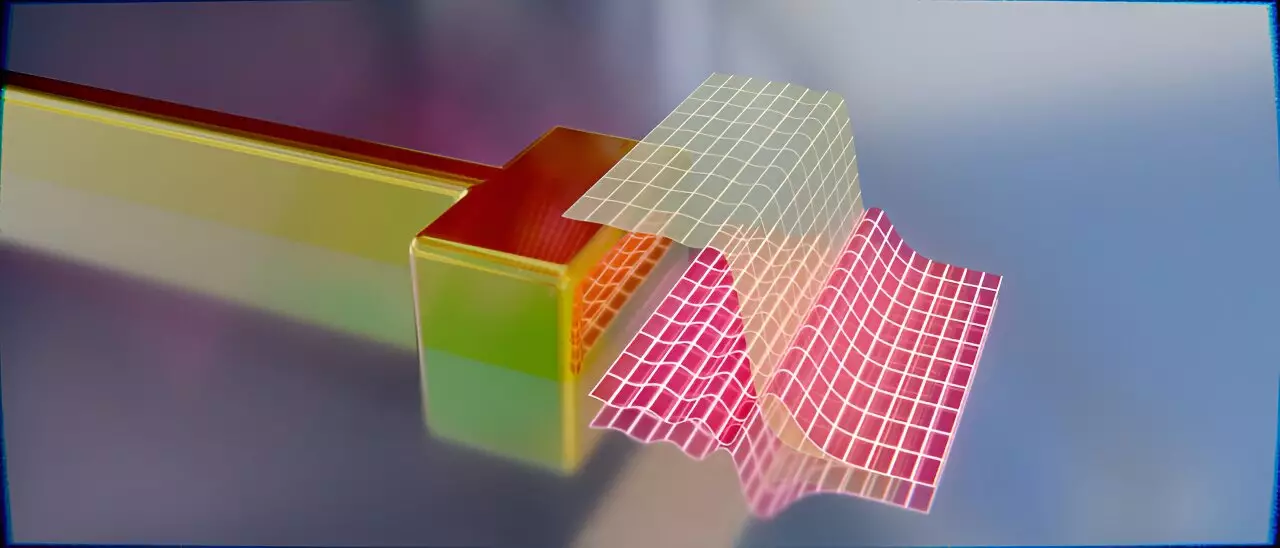In the relentless pursuit of faster computing, today’s electronic devices are reaching their physical boundaries. Traditional semiconductor technology, which relies on electrons for signal transmission, operates at frequencies capped at a few gigahertz. This limitation translates to billions of operations per second, which, while impressive, is insufficient for the demands of modern computing applications. Consequently, systems are beginning to leverage multiple chips to distribute computing tasks, a workaround necessitated by the inability to enhance the performance of individual chips further. As we look to the future, the need for a transformative approach in computing hardware is more apparent than ever.
Imagine a world where light, rather than electricity, powers computing processes. Theoretically, this transition could enhance computation speeds by up to 1,000 times, a game-changer for technology. Photons, the fundamental particles of light, can travel faster than electrons, promising increased performance. Researchers are eager to exploit this potential, specifically through the development of plasmonic resonators. These nanoscale structures, often dubbed “antennas for light,” facilitate the interaction between light and electrons at unprecedented speeds. However, enabling efficient modulation of these resonators has posed significant challenges.
Addressing the limitations of plasmonic resonators, a team of physicists from Julius-Maximilians-Universität Würzburg and Southern Denmark University has made significant strides in achieving electrically controlled modulation of these light antennas. This advancement is crucial for the evolution of active plasmonics, representing a stepping stone toward the realization of ultrafast computer chips. Their recent findings, published in the journal Science Advances, explore innovative methods to manipulate the surface properties of these resonators—a pivotal strategy that could revolutionize their functionality.
By focusing on a singular nanorod made of gold, the researchers implemented a straightforward yet sophisticated method of electrically contacting the resonator. This attainment, while seemingly simple in concept, was made feasible through advanced nanofabrication techniques utilizing helium ion beams to construct the resonator precisely. The effective employment of these cutting-edge techniques at JMU’s Chair of Experimental Physics laid the groundwork for measuring the minuscule but critical changes in resonance and optical behavior.
Dr. Thorsten Feichtner, leading the research, explains the underlying principles of their innovative approach. Drawing an analogy to a Faraday cage, where electrons gather on an exterior to safeguard the inhabitants inside, the study reveals how additional electrons on a resonator’s surface alter its optical properties. Previously, these interactions could be adequately understood through classical physics. However, the Wü rzburg team’s findings exposed a new layer of complexity: electrons no longer simply halted at the edges of nanoparticles; instead, they exhibited unexpected behaviors, creating a “smeared” transition across surfaces.
This revelation prompted theorists at Southern Denmark University to develop a semi-classical model, combining quantum properties into a variable that allows for classical calculations. By refining the response functions of surfaces and integrating both classical and quantum physics, this new framework enhances our comprehension of the phenomena at play. As Luka Zurak, a physicist from JMU and study co-author, articulates, this model successfully replicated experimental observations but left some questions unanswered regarding the quantum effects in play.
The promising research outcome not only elucidates the mechanics behind plasmonic resonators but also opens the door to future innovations. With the ability to specifically tailor new antennas to feature or diminish certain quantum effects, the researchers envision a future where smaller, more efficient optical modulators could be harnessed for various technological applications. Furthermore, the introduced system may hold significant implications for enhancing our understanding of surface electrons in catalytic processes, potentially yielding transformative insights in fields related to energy conversion and storage.
As we stand on the brink of a new era in computing technology, the exploration of plasmonic resonators brings hope for overcoming current limitations. By merging classical and quantum mechanics, researchers are paving the way for computers that are not only faster but also fundamentally more efficient. Moving forward, continued collaboration between theoretical insights and experimental advancements will be essential to realizing the vast potential of light-based computing. The future is bright—both literally and figuratively—as we edge closer to harnessing the full capabilities of photonic technology.


Leave a Reply